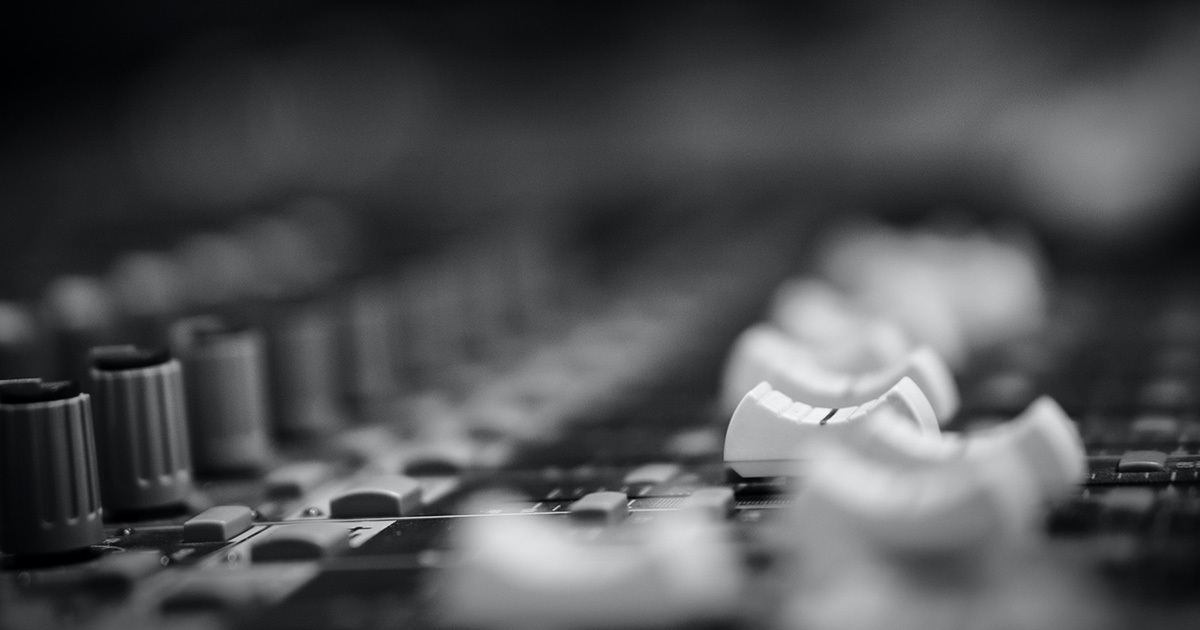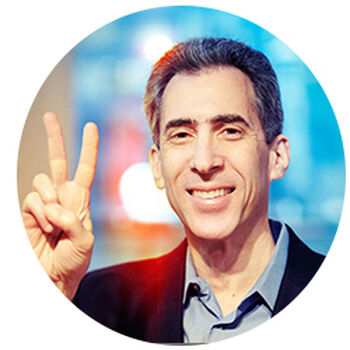The Clarinet in the Commercial Recording Studio Part 2
by Mitchell Estrin
Date Posted: September 03, 2020

Photo by Leo Wieling
During my years living in New York City, I was very fortunate to be a first call clarinetist for commercial recording work. This encompassed the years 1975-2000 and was during an era when studio recordings for television/radio commercials and motion picture soundtracks were commonplace. The advent of synthesizers, computer music, and the home studio have significantly decreased the number of recording sessions performed in recording studios by live musicians. I’d like to share some of the history and my recollections of being a part of a flourishing time in this amazing industry. Part 1 focused on television/radio commercials. In Part 2, I will discuss motion picture soundtracks.
Hollywood
Los Angeles has historically been the epicenter for recording motion picture soundtracks. The famous film studios – Disney, MGM, Paramount, Sony, 20th Century Fox, United Artists, Universal, and Warner Bros. – are all part of the legendary Hollywood movie making industry. Just as Madison Avenue in New York City became the magnet location for television and radio commercial music production, Hollywood became the preeminent location for motion picture soundtrack production. This rich history began even before the creation of “talkies” - movies that included spoken dialogue - in 1927.
Notable 20th Century Film Score Composers
It is interesting to note that in the twentieth century, many of the most prominent composers of concert music also composed motion picture soundtracks. Some famous examples are Leonard Bernstein, Aaron Copland, John Corigliano, Philip Glass, Aram Khachaturian, Erich Korngold, Sergei Prokofiev, Camille Saint-Saëns, Erik Satie, and Dmitri Shostakovich. There was also a group of remarkable composers who composed in the early Hollywood days almost exclusively for the cinema. This list included such luminaries as Bernhard Herrmann, Miklós Rósza, Max Steiner, Dmitri Tiomkin, and Franz Waxman. During the next generation, some of the most memorable movie scores were written by John Barry, Elmer Bernstein, Jerry Goldsmith, and Maurice Jarre. There are a number of very gifted composers writing film scores today, and at the pinnacle of this list is the brilliant genius, John Williams. At a time when producers were gravitating towards using electronic scores to replace live orchestras, John Williams brought the symphony orchestra back to prominence in 1977 with his magnificent score for Star Wars. I believe that history will reflect that some of the greatest and most memorable music written in the twentieth century was for motion picture soundtracks.
Movie Soundtrack Recording in NYC
Beginning in the late-1970s and lasting for about 30 years, New York City also became a hub for motion picture soundtrack recording. During this time period, the motion picture industry was flourishing in Hollywood and the soundstages where soundtracks were recorded were often very busy and unavailable. This created opportunities for soundtracks to be recorded elsewhere. New York City was sometimes the geographical preference for the composer, producer, or director, and was convenient for recording when New York was the location for the filming of the movie. There were a number of excellent large recording studios in Manhattan that could accommodate a full symphony orchestra. This list included A&R 799, Clinton Studios, RCA Studios, Right Track Studios, Sony Studios, and The Hit Factory.
Another popular location in Manhattan to record motion picture soundtracks was the Grand Ballroom of the Manhattan Center. The Manhattan Center was built in 1906, originally as an opera house, and the facility has seen a number of repurposing renovations through the years. Beginning in 1926, the New York Philharmonic recorded there for many decades, likely to avoid the rumbling of the subway underneath Carnegie Hall. Although the Grand Ballroom was not originally conceived for studio recording, the superior acoustics and size of the room made the space an ideal recording venue for large ensembles. Sadly, and with the exception of the Manhattan Center, in recent years all of the other studios have closed. The cost of real estate in Manhattan, prevalence of soundtrack production going outside of the United States, and resurgent availability of soundstage facilities in Los Angeles, heavily impacted the motion picture soundtrack recording industry in New York City. Soundtracks are still recorded on occasion in the Big Apple, but not nearly with the frequency during the latter part of the twentieth century.
Emile Charlap
Emile Charlap (1918-2015) was the premier musical contactor in New York City during the heyday of the New York motion picture soundtrack industry. Musical contractors are the commercial music equivalent of an orchestra personnel manager and are responsible for the hiring of musicians. Emile Charlap’s roster of musicians was comprised of the finest players in New York City, and it was a very high honor to work for Emile. He was a professional trumpeter and a brilliant businessman. His music copying and contracting business was the gold standard for commercial music in New York City for many decades. Emile knew the music business inside and out, had a great sense of humor, and was fiercely loyal to his players. He often joked that if had been just a little better of a trumpet player he would never have made any money! He always paid his musicians with strict adherence to the American Federation of Musicians collective bargaining agreements.
Sandra Park
During the 1990s, Sandra Park emerged as a leading contractor in the New York City commercial music landscape. Sandra is a world-class concert violinist who performed for many years with the New York Philharmonic. She continues today as the top music contractor for motion picture soundtracks in New York City, and is highly respected for the superb quality of her orchestras.
Inside the Recording Business
As mandated by the American Federation of Musicians collective bargaining agreement, motion picture soundtrack recording sessions are booked for a minimum of three hours and usually include a possible one-hour of overtime. In 1980, when I began recording motion picture soundtracks, the pay scale for a musician performing a three-hour recording session in a symphony orchestra sized ensemble was around $150. The current pay scale for a musician performing a three-hour session in a large ensemble is $308. The number of recording sessions booked for a particular film depended on the number of minutes of music that were planned for the movie. Typically, you could record 3-4 minutes of music per hour. As an example, if a film had 60 minutes of music to record, it was likely that musicians would be hired for six 3-hour recording sessions.
When entering the recording studio, you would carefully navigate through the labyrinth of wires, microphones, boom stands, partitions, music stands, and instruments to find your personal recording location. The music stand usually had a stack of music – called “cues”– waiting for you. This was often dozens of pages of sheet music, each cue with its own title and identification number. After tuning, the orchestra would begin recording, most often under the baton of the composer. There was never a predictable order for recording the cues; the conductor would simply call out the title and number for the next cue to be recorded. Being a good sight-reader was a must, as every note was recorded from the very beginning.
Before starting to record the first session of a soundtrack, the engineer would typically request a sound check. She/he would call out on the studio monitor speakers from the “booth” - the glass enclosed operations epicenter housing all of the technology the engineer operated to record - for single instruments (or occasionally instrumental families) to play alone so they could adjust the microphone levels. As a wind player, I often had solo passages during the sessions, but everyone would hear you during the sound check! The producer would sit in the booth with the engineer and either of them could give instructions to the conductor between “takes.”
Sometimes, you might record a cue only once and move right on to the next one. Other times, you might record a cue several times while adjustments were made in the timing, instrumentation, or character of the music. As the film was already completed, it was up to the conductor to be certain that the music synched perfectly with the movie. Most often this was done by adjusting the timing or tempo of the music and by using a click track. I remember that Elmer Bernstein did not utilize a click track and synched the music perfectly by instinct. In twenty plus years and literally thousands of takes recording motion picture soundtracks, I could probably count on one hand the number of times a take had to be redone due to any issue with the performance of the musicians.
Most Memorable Sessions
Personal highlights for me included the opportunity to record with legendary Hollywood composers Ennio Morricone (The Untouchables and Wolf), Elmer Bernstein (The Age of Innocence), Alan Menken (Beauty and the Beast, Aladdin, and Pocahontas), and Howard Shore (An Innocent Man, Before and After, Guilty As Sin, Quick Change, Prelude to a Kiss, Ed Wood, and The Score). It was an honor to work with these and so many other brilliant composers. It was also a great gift to collaborate with so many consummate musicians in bringing to life the great music for the cinema from the late twentieth century.

About the Author
Mitchell Estrin is Professor of Clarinet at the University of Florida and Music Director and Conductor of the University of Florida Clarinet Ensemble. He is President of the International Clarinet Association and author of the biography Stanley Drucker Clarinet Master published by Carl Fischer. Estrin performed as a clarinetist with the New York Philharmonic for over twenty years in hundreds of concerts and on 19 tours. As an international concert artist, he has performed in 37 countries on 4 continents. As a studio musician, Estrin has recorded dozens of motion picture soundtracks for Columbia Pictures, Walt Disney Pictures, Paramount Pictures, MGM, 20th Century Fox, United Artists, and Warner Brothers on feature films. They include Fargo, Beauty and the Beast, Aladdin, Interview With a Vampire, Home Alone 2, Pocahontas, Doc Hollywood, Regarding Henry, TheUntouchables, and more. His television credits include recordings for ABC, NBC, CBS, CNN, HBO, TBS, and ESPN. Learn more about Mitchell Estrin.